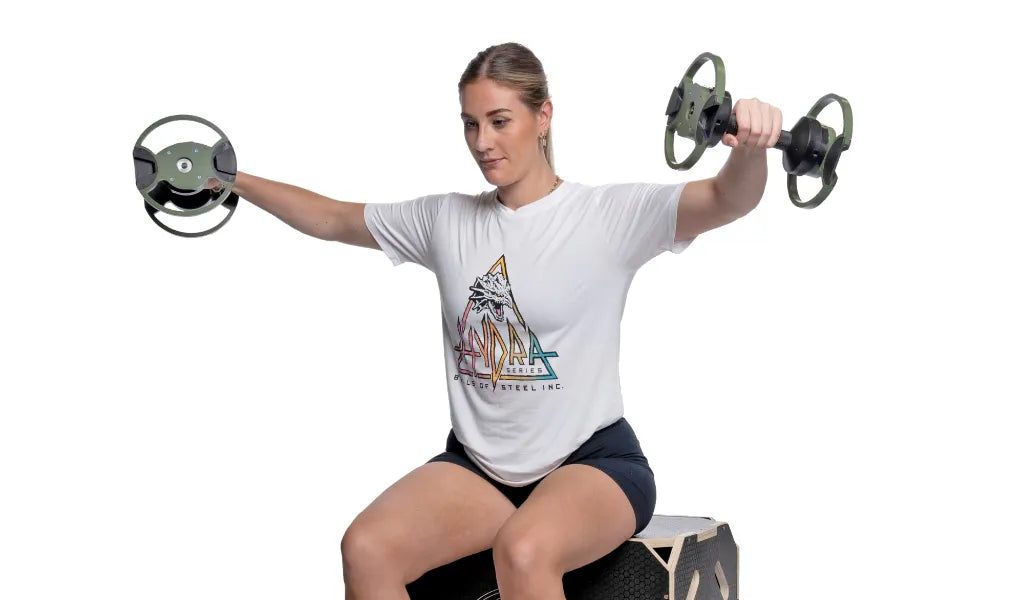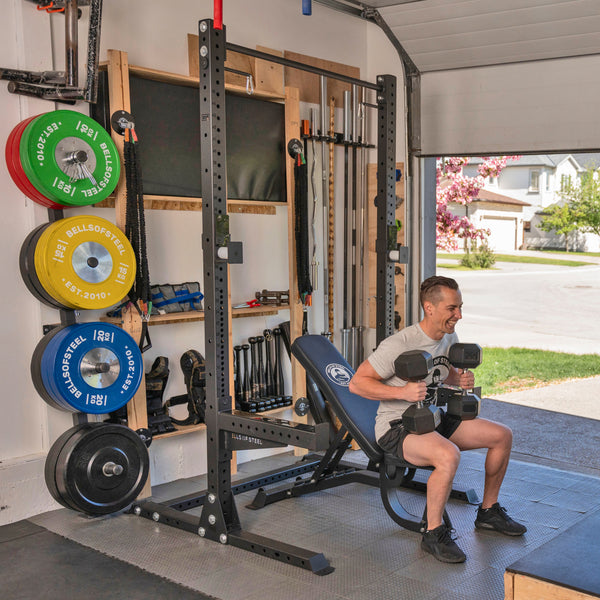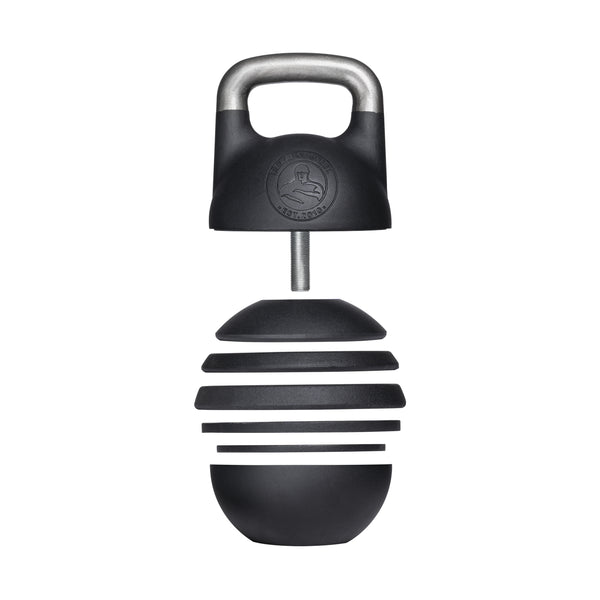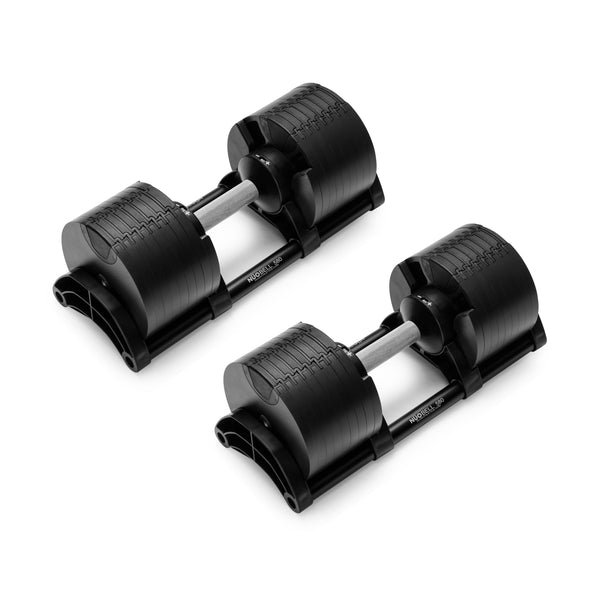So, you’ve decided to trade in your endless cardio sessions for something that builds strength, confidence, and biceps that double as tickets to the gun show? Welcome aboard! Strength training isn’t just for powerlifters, latest fad lifters, or dudes who grunt loudly in commercial gyms. It’s for everyone—including women—and your home gym is the perfect place to start.
Why Strength Training Rocks for Women
Let’s clear something up right away: strength training won’t make you “bulky.” That myth has been curling in the squat rack for far too long. What strength training will do is:
-
Build lean muscle and burn fat (yes, at the same time—magic!).
-
Improve bone density (hello, long-term health).
-
Increase metabolism (your resting calorie burn gets a boost).
-
Make everyday life easier (lifting groceries like Thor? Check).
-
Boost confidence (because hitting PRs feels amazing).
Now that we’ve got the why out of the way, let’s dive into the how.
Step One: Gear Up Without Going Broke
No need to build a fortress of iron right away. Start with these beginner-friendly staples:
Best Beginner Equipment for Women
-
Adjustable dumbbells or kettlebells: These are space-saving and versatile for everything from squats to presses to swings.
-
Resistance bands: Perfect for warm-ups, mobility work, and extra resistance on compound lifts.
-
A bench or sturdy surface: For things like step-ups, hip thrusts, and supported rows.
-
Yoga mat or gym flooring: Your knees and elbows will thank you.
-
Optional but spicy: A barbell and plates once you’re ready to level up. Ask around the women' s strength training community, and you’ll find that many of us fall in love with the barbell rather quickly.
Step Two: Bust the Myths and Flex the Truth
Let’s dismantle a few lingering misconceptions faster than a failed deadlift attempt.
Common Strength Training Myths—Debunked
-
“I’ll get too bulky.” Nope. Building serious muscle mass takes years, intense training, and a whole lot of calories. You’ll get strong and toned, not swole.
-
“I need to lose weight first.” Backwards thinking. Strength training helps you lose weight by increasing muscle and metabolism.
-
“I should only do light weights and high reps.” Only if your goal is to never improve. Heavy weights are your new BFF (and we’ll explain how to use them wisely).
-
“Cardio is better for fat loss.” Strength training torches calories and shapes your body. Plus, muscles are fat’s worst nightmare. Cardio is better for heart health and endurance. Both together is *chef’s kiss*.
Step Three: Choose a Training Style That Fits
Sets and Reps 101: Match Your Goals
Think of reps and sets like your training recipe. Here's how to cook up results:
-
For strength: 3–6 sets of 3–6 reps at heavier weight.
-
For muscle (hypertrophy): 3–4 sets of 8–12 reps.
-
For endurance: 2–3 sets of 12–20 reps (great for circuit style).
You can either start with full-body workouts 2–3x a week or split based on major muscle group (think upper body, lower body, or more granular with back, shoulders, legs and glutes, etc.).
Compound movements like squats, deadlifts, and presses should be the main course, with accessory movements for dessert.
Step Four: Cardio and Strength—The Dynamic Duo
Don’t pit cardio and strength against each other like they’re in a sibling rivalry. Instead, combine them like peanut butter and protein shakes.
How to Mix Cardio and Strength Without Burning Out
-
Try HIIT (High-Intensity Interval Training): Combine moves like kettlebell swings, jump squats, and push-ups into circuits.
-
Separate Days: Alternate strength and cardio to give muscles time to recover.
-
Cardio After Lifting: If you’re doing both in one session, lift first so you can give your strength work your best effort.
Step Five: Progressive Overload
Here’s the deal: to get stronger, your body needs a challenge. Imagine stacking blocks. Each week, you add another block. That’s progressive overload—slowly adding more reps, weight, or sets over time so your body adapts.
You’re not trying to crush yourself every workout. Just gently nudge the envelope forward. Small increases = big wins.
Don’t overthink it: flew through your reps last week? Add 5lbs this week. Can’t quite make that jump? Do a few more reps at the same weight.
Step Six: Form First, Always
No one wants to win a gold medal in the “Ouch, My Back” Olympics. Proper form protects you from injury, helps you activate the right muscles, and makes you look like a boss while doing it.
Tips for Keeping Your Form on Point
-
Use mirrors (or film yourself) to check alignment.
-
Start light and learn the movement before adding weight.
-
Use cues: keep your core braced, shoulders back, and knees tracking over toes.
When in doubt, it’s worth working with a trainer to get you started. You can also find women’s strength training communities online for feedback who those who have walked the iron path before.
Step Seven: Choose a Program You’ll Actually Stick With
Consistency beats perfection. Find a beginner-friendly program that:
-
Fits your schedule (even 30 minutes counts).
-
Has clear progression.
-
Is flexible enough for real life (kids, work, dogs, etc.).
Bonus points if it’s fun. Because if you hate it, you won’t do it. Bells of Steel’s blog has plenty of resources to get you started—check out our guides on beginner home gym setups and creating a beginner-friendly schedule.
FAQs: Girl, We Got Answers
Q: Do I need to lift heavy to see results?
A: You don’t need to max out every session, but lifting something heavier than usual is a great start. Challenge = change.
Q: Can I do strength training at home with no equipment?
A: Absolutely. Bodyweight moves like squats, lunges, and push-ups are still strength training. But adding resistance (bands or dumbbells) levels things up.
Q: How often should I train?
A: Start with 2–3 days per week. Focus on full-body workouts and grow from there. Rest is just as important as the workouts.
Q: What if I’m not seeing results?
A: Track your progress, eat enough protein, and make sure you’re increasing weight or reps over time. And yes, water and sleep are part of the program too.
Q: Will I lose my curves?
A: Not unless your curves are made of pure stress and zero muscle. You’ll build shape, strength, and quads of the gods. If you don’t like the changes to your body, change your approach.
Strength is Beautiful
Strength training is the ultimate act of self-care. It’s not about punishing your body—it’s about empowering it. You’re not just picking up weights—you’re picking up confidence, resilience, and independence.
Ready to build your own belle of steel legacy? Grab those dumbbells, blast your hype playlist, and take up space like you were born to.
Let’s get lifting. 💪
Want to go deeper? Check out other helpful reads like What to Expect in Your First Month of Training at Home and How to Stick to a Workout Plan.




